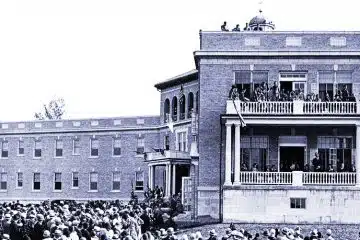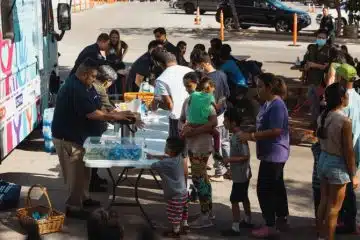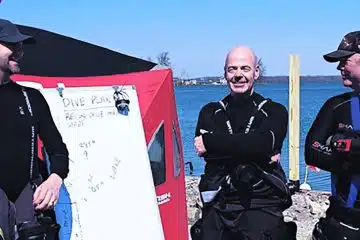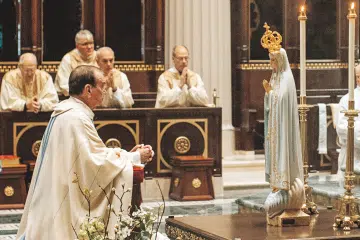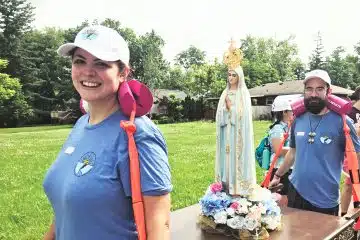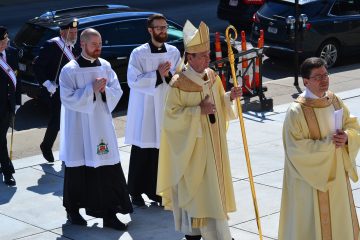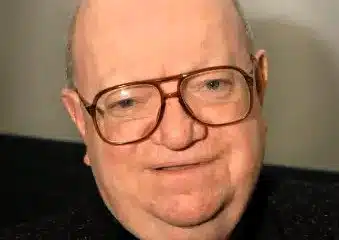Vatican offers instructions on cremation

Although permission for Catholics to be cremated was issued and incorporated into Canon Law in 1963, Cardinal Gerhard Muller, prefect of the Vatican Congregation for the Doctrine of the Faith, told reporters Oct. 25 that church law had not specified exactly what should be done with “cremains,” and several bishops’ conferences asked the congregation to provide guidance.
That request led to “Ad resurgendum cum Christo” (“To Rise With Christ,”) an instruction “regarding the burial of the deceased and the conservation of the ashes in the case of cremation,” issued Oct. 25. The document was approved by Pope Francis after consultation with other Vatican offices and with bishops’ conferences and the Eastern churches’ synods of bishops.
“The instruction from the Vatican regarding the disposition of the cremated remains of a deceased person is a helpful clarification for the faithful’” Archbishop of Cincinnati Dennis M. Schnurr said.
“The Congregation for the Doctrine of the Faith teaches that, for strong theological reasons important to our Catholic faith, cremains must not be scattered, stored at home, or preserved in mementos,” he said in a statement released to the public in November.
The entire document is available at the following address on the internet: http://www.vatican.va/roman_curia/congregations/cfaith/documents/rc_con_cfaith_doc_20160815_ad-resurgendum-cum-christo_en.html.
Catholic cemeteries in the archdiocese were pleased by the document. “We’re sort of excited that the church has taken another look at the law regarding cremated remains,” said Steve Bittner, President of the Cincinnati Catholic Cemetery Society.
“Although this is really nothing new, it gives us an opportunity to reach out to funeral homes and grief and bereavement ministries in the parishes to review and educate the faithful about the directive,” Bittner, who was recently elected president of the board of directors of the U.S. Catholic Cemetery Conference said.
“This is the way we should practice our faith,” Bittner said quoting William E. Gladstone, the 19th century British statesman. “This quote is on our wall, Bittner said: ‘Show me the manner in which a nation or a community cares for its dead and I will measure with mathematical exactness the tender sympathies of its people, their respect for the laws of the land and their loyalty to high ideals.’”
His 173-year old association, which manages and maintains St. Joseph, St Mary and St. John cemeteries, has been offering a free cremation service, “so that faithful Catholics can get their loved one off the mantle and back home,” he said. The offer is that the cemetery will inter the remains at no charge, “all at our cost,” Bittner said. “We take the family to the spot, show them that their loved one will be memorialized. We say some prayers and place the remains in consecrated ground, rather than in a sand trap at a golf course or someplace like that. This all demonstrates the belief we have in the resurrection of the body on the last day.”
Bittner said his organization will be meeting with funeral home directors and, with the pastors’ permission, with parish bereavement ministries so that the faithful can be educated about the directive.
Director of Archdiocesan Cemeteries, Deb Crane, at Gate of Heaven Cemetery, also said the directive was an opportunity to educate Catholics about the Church’s teaching on cremation.
There has been much construction of columbarium facilities at Gate of Heaven as more and more Catholics choose the relatively economical option of cremation over traditional burial in a vault and casket or casket and mausoleum.
At Calvary Cemetery in Dayton, there is a year-old facility, the St Kateri Preserve, dedicated to natural burials.
“Death is part of the natural cycle of life. Natural burials honor the idea of “dust to dust,”
says the cemetery’s website. Calvary Cemetery offers these options for burial in an earth-friendly way:
o “Ashes or bodies are placed in biodegradable containers or shrouds. Bodies are prepared with no embalming or with environmentally friendly techniques.
o “Graves may be dug by hand and family members may participate. Many find that this experience is a beautiful way to say goodbye to their loved one and provides a sense of closure.
o “Graves are marked with field stones or engraved rocks. A GPS system makes identifying the burial site simple.
o “Trees and wildflowers are chosen from a native plant list provided by a botanist for eco-conservation providing maximum sustainability of the area birds and wildlife.”
“For Catholics, this is the ultimate way to return to the Earth. Our church teaches us that our bodies or their ashes are best kept together in an appropriately reverent vessel when interred. The St Kateri Preserve offers the opportunity to use hand crafted urns and boxes made of biodegradable materials, keeping the liturgical promise while also rendering the immediate release back to the earth many desire.”
The cemetery also offers a special site for cremated remains in a more traditional setting called “Spirit of the Living Waters.”
Deb Crane, Director of Cemeteries of the Archdiocese, discussed the owned and operated Gate of Heaven Cemetery. She said, “On a national level, cremations will for the first time equal traditional burials this year. The cremation rate does vary by region across the country. In the west, cremations represent 75percent of all burials whereas in the southeast, they are about 30 percent. In the Midwest, the mix is estimated to be 45 percent cremation. At Gate of Heaven, last year’s results were below the region figures, but the mix at Gate of Heaven is changing very rapidly,” she said
“Overall, the rate of cremations is rising aggressively at five percent per year,” Crane said. That means in just five years, cremations will represent about 70 percent of burials in the Midwest. In 10 years, given the current trends, it will be 95 percent.
Research indicates the shift is driven by economics (savings of about one-third), Crane said.
“In our country today, families are widely dispersed geographically. Moreover, it is not uncommon for seniors to have more than one residence. Given this broad dispersion of families, relocation of the deceased becomes a major consideration (moving a body across state lines can easily cost as much as a funeral), Crane explained.
“As a result, the second driver of cremation demand is the easier logistics considerations provided by cremation.”
She also explained that the recent Vatican directive contains nothing new but gives impetus to an education program already in action.
“We do have a program that explains the Church’s rules on cremation and the disposition of remains. It is our INSIGHT Seminar series, as featured in the October Catholic Telegraph,” she said. “The seminar has been presented to ten parishes thus far, nine more are being scheduled, and ten others are pending. This educational program is expected to continue beyond this initial offering.”
Catholic News Service provided some of those questions to the staff of the U.S. Conference of Catholic Bishops’ Secretariat of Divine Worship to have them answered:
Q.: The new document from the Congregation for the Doctrine of the Faith (CDF) spells out regulations regarding cremation. Does it change anything in how the Catholic Church in this country has regulated this issue?
A.: No, the new document from the CDF doesn’t change anything for us in this country. For example, we already have permission to have a funeral Mass in the presence of cremated remains. What the Instruction does do, however, is reiterate the church’s preference for the burial of the body in normal circumstances, and, when cremation is necessary, its insistence that the remains be properly interred.
Q.: If the document says that traditional burial is preferred, does that mean cremation is wrong?
A: If the church saw cremation as “wrong,” it wouldn’t permit it! Sometimes cremation can truly be necessary. However, the ancient custom and the preference of the church is to bury the body, whenever possible.
Q.: What should I do if I’ve already scattered the ashes?
A.: We can’t change the past, of course, and if you truly didn’t realize at that time that it shouldn’t be done, then you shouldn’t burden yourself with guilt. Remember that what happens to a person’s body after death has no bearing on what happens when that person’s soul meets the Lord on judgment day. However, you might wish to offer extra prayers for the person’s happy repose.
Q.: If I plan to donate my body to science, after which it will be cremated, is that OK? What if the laboratory disposes of these ashes?
A.: This would seem to be a valid reason for cremation. However, it would be important to make sure that arrangements are made for a funeral Mass, and that a trusted relative or friend is able to receive the remains and see to their proper burial.
Q.: How do I convince my dad to let me bury my mother’s ashes, which he now has at home?
A.: Only you would know the best way to approach a situation like that, and it would depend a lot on his reasons for keeping the remains and on his own personal faith. Perhaps making him aware of the church’s preference would be enough to convince him? Or the assurance that his own earthly remains will one day be buried alongside those of his wife? Also, the Vatican’s instruction itself articulates some compelling reasons: “The reservation of the ashes of the departed in a sacred place ensures that they are not excluded from the prayers and remembrance of the Christian community. It prevents the faithful departed from being forgotten, or their remains from being shown a lack of respect…”
Q.: Entombment of ashes is expensive; is there any ‘consecrated ground or consecrated place’ where Catholics can place ashes for free?
A.: That would vary from place to place. There have been some Catholic dioceses and cemeteries that have even organized special opportunities for the interment of cremated remains for no cost at all, just as a way to encourage people who might have been keeping the remains without a good idea of what to do with them. You might wish to bring this question to the office of your local bishop — the people who assist him might be able to help you find an appropriate place, particularly if the expense is an important factor.
Q.: “I am afraid I did something wrong. When my daughter died, I could not afford to bury her, but I had her cremated and her ashes will be buried with me. I also had some ashes put in crosses for her kids. I am distressed I did something very wrong.”
A.: Clearly you did that with good intentions, and weren’t aware of what the church wants us to do with the mortal remains of our loved ones, so you shouldn’t burden yourself with guilt over this. Would it be possible now to find a cemetery plot where you can bury her remains, and make arrangements so that your own remains can someday go into the same location? If at all possible, the ashes in the crosses should also be buried or interred along with them.
Q.: Many people die and are never buried properly. Perhaps they die at sea or in an explosion or whatever. Why is the Vatican worried about something like this when there are so many other problems in the world?
A.: This instruction isn’t concerned with those kinds of situations. Burial at sea is necessary at times, as is cremation. The main purpose for this instruction is to help foster a healthy respect for the human body, even after death, especially in light of the move in recent years away from traditional burial in favor of more expedient and economical means. Where contemporary culture today may well question what difference it makes, the church is reminding us to recall that the human body is an integral part of the human person deserving of respect even after death. The earliest Christians buried the bodies of their dead, and this set them apart from many of their contemporaries. We bury our dead out of reverence for God our creator, and as a sign that we look forward to the resurrection on the last day.


